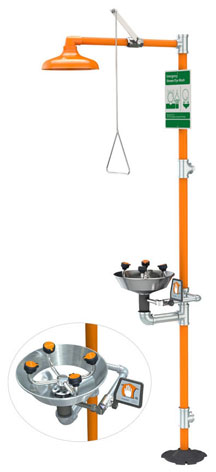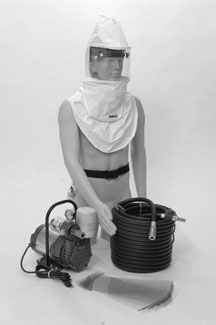| The Home page of ILPI's Safety Data Sheet (SDS) Resource, the leader in SDS information since 1995! | |
| The history and philosophy behind this resource. | |
| A curated collection of books and reference materials concerning Safety Data Sheets and closely related topics. | |
| Paste your plain text SDS into the SDS-Demystifier, and it will be converted into a hypertext-enriched document with links to detailed explanations of each key term. | |
| An extensive list of frequently asked questions about Safety Data Sheets including regulations, content, compliance, and more. | |
| A humorous take on Safety Data Sheet jargon. Fill in the blanks on our entry form to generate a personalized Unsafety Data Sheet to share with your coworkers. | |
| Since 1995, we've maintained this massive curated list of the best places to find Safety Data Sheets on the Internet. | |
| Way more than a glossary, this hypertext-enhanced resource covers hundreds of SDS-related terms and expert knowledge. Each entry includes both the SDS relevance and links to additional authoritative resources. | |
| Archived results of Safety Data Sheet related polls taken by some of our millions of site visitors | |
| You are here! The OSHA regulations behind SDS regulations, including the inspection guidelines and over 400 official interpretations letters under the Hazard Communication Standard | |
| Commercial suppliers of SDS authoring and management software as well as cloud compliance services. | |
| Commercial companies that will create SDS's for your specific needs as well as SDS translation companies. |

Safety signs, banners, and scoreboards? Get yours at Safety Emporium!
| Title: 07/17/1985 - Response to a request that foundry castings be classified as articles under the Hazard Communication standard. | |
| Record Type: Interpretation | Standard Number: 1910.1200 |
July 17, 1985
Mr. Gary E. Mosher
American Foundrymen's Society
International Headquarters
Golf & Wolf Roads
Des Plaines, Illinois 60016
Dear Mr. Mosher:
We have reviewed your letter of June 19 addressed to Mr. Roy Gibbs of my staff, and presenting your organization's view that foundry castings should be classified as "articles" under the Hazard Communication Standard (HCS).
On March 22 I corresponded with William Buelsen of your organization on the same subject. That document stated that a casting could not be classified as an "article" if it was reasonable for its manufacturer to anticipate customers to be exposed to constituent hazardous chemicals during use. It has never been our intent to state or imply that a casting could not be classified as an "article." A blanket classification for all castings, however, is inappropriate since some exposures can be expected.
Your letter points out that one purpose of the HCS is to ensure that employers and employees are provided with information relating to hazardous chemicals. It is your position that the users of castings will become aware of the hazards associated with castings through other sources; for example, that the hazards associated with welding on castings will be covered in the Material Safety Data Sheets (MSDS) that are supplied with welding materials (rods and gases). Additionally it is your position that purchasers are aware of the hazardous chemicals in castings since castings are made to the purchaser specifications.
With regard to the new release of hazardous chemicals from welding on castings, MSDS's for welding materials will not represent all of the hazardous chemicals present in a casting for every welding task. In other words, it would not be reasonable to assume that the constituents of all welding rod/casting combinations would be the same.
Relative to your second position, OSHA agrees that castings purchasers should be aware of the components present in a casting, since the product is made to the customer's specifications. However, we cannot agree that knowledge of a casting's components alone would ensure knowledge of and communication of information on the hazardous chemicals that may exist in a casting.
Most manufacturing users of castings will rely on the manufacturer for hazard communication information on a casting since the HCS places these responsibilities on a product's manufacturer.
Nothing in the HCS prevents or limits the resources used to perform hazard determinations, complete MSDS's, and label hazardous chemicals. Castings manufacturers could enter agreements wherein their customers assist in the development of hazard communication information. This would be acceptable and would likely lead to the development of more comprehensive information.
Please feel free to contact us if further assistance is needed.
Sincerely,
John B. Miles, Jr., Director
Directorate of Field Operations
The original official public domain version of this document is available from OSHA at https://www.osha.gov/laws-regs/standardinterpretations/1985-07-17.

